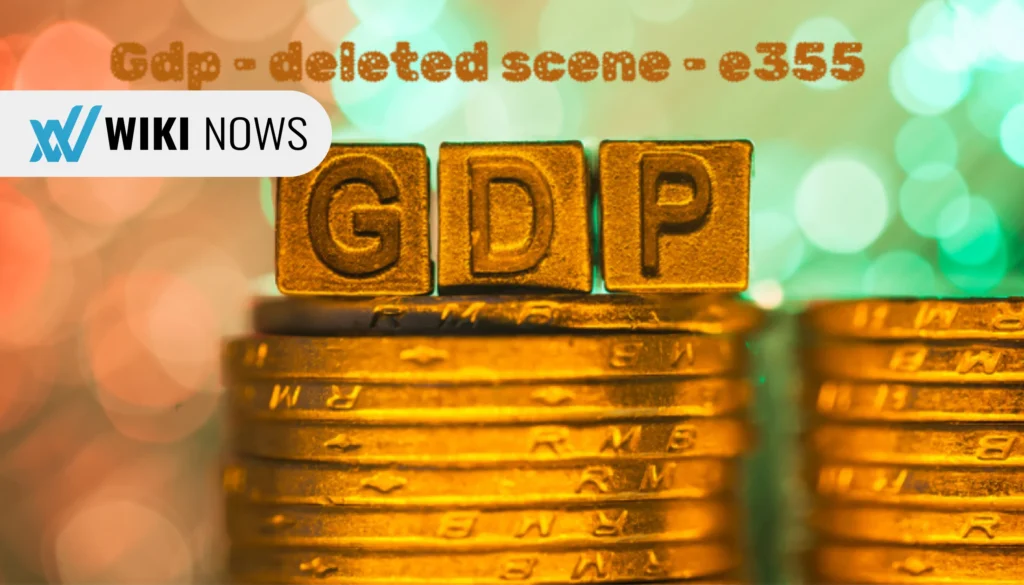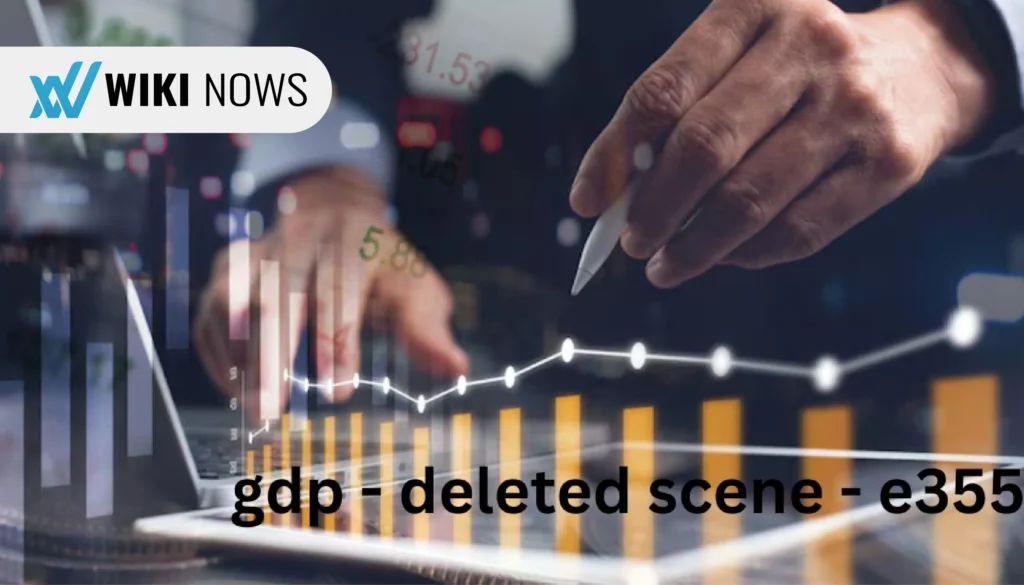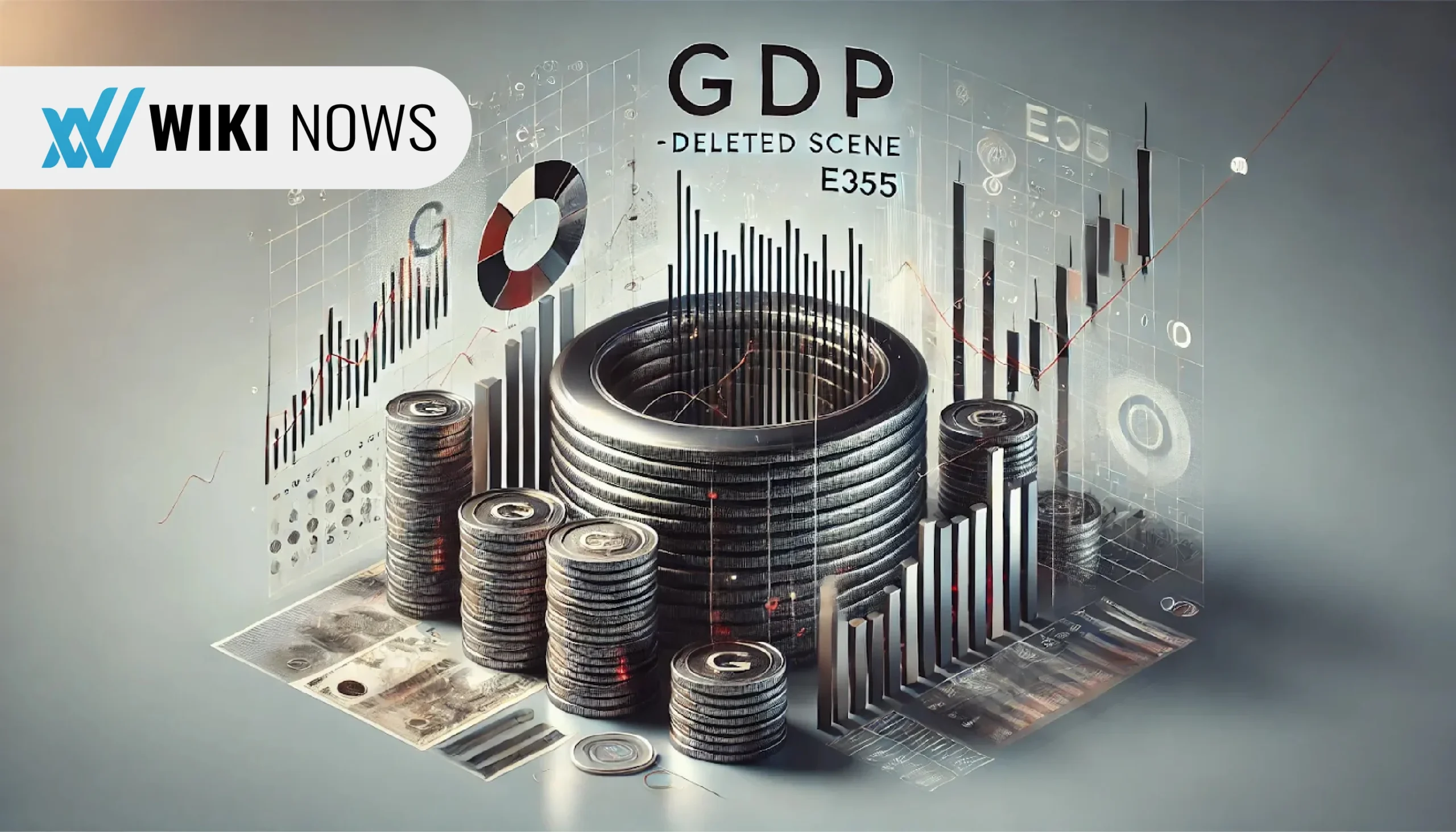The economic world is often shrouded in complex data, with Gross Domestic Product (GDP) serving as one of the most crucial indicators of a nation’s economic health. However, in the intricate calculations that yield GDP figures, not everything is as it seems. Today, we delve into the concept of the “GDP – deleted scene – E355,” a symbolic reference to the often overlooked, hidden, or omitted elements in GDP calculations that can significantly impact our understanding of economic growth.
Understanding GDP and Its Role in Economic Analysis
Before we explore the concept of “GDP – deleted scene – E355,” it’s essential to have a firm grasp of what GDP is and why it matters. GDP indicates the total monetary value of all goods and services produced inside a country’s borders over a given period, generally a year or a quarter. It is a broad measure that reflects a nation’s economic activity and is often used as a benchmark to compare the economic performance of different countries.
GDP is calculated using three primary approaches: the production approach, the income approach, and the expenditure approach. Each method provides a different perspective on economic activity, but they all aim to capture the same fundamental data – the total output of the economy.
However, despite its significance, GDP is not without its flaws. It is an aggregate figure that often masks disparities in wealth distribution, environmental degradation, and the informal economy. This is where the concept of “GDP – deleted scene – E355” comes into play.
The Idea Behind “GDP – Deleted Scene – E355”
The term “GDP – deleted scene – E355” can be thought of as a metaphor for the hidden aspects of economic growth that are often left out of traditional GDP calculations. Just as a deleted scene in a movie might provide crucial context or character development, the elements omitted from GDP calculations can reveal important insights into the true state of the economy.

One key “deleted scene” in GDP calculations is the informal economy. Much of the economic activity in many nations, particularly developing ones, takes place outside of the formal sector. This includes everything from street vending and unregistered businesses to informal employment arrangements. While these activities contribute to the livelihoods of millions of people, they are often not captured in official GDP statistics, leading to an underestimation of a country’s economic output.
Another critical “deleted scene” is environmental degradation. Traditional GDP calculations do not account for the depletion of natural resources or the environmental costs associated with economic activities. For example, deforestation, air and water pollution, and the loss of biodiversity are often excluded from GDP figures, even though they have long-term consequences for a country’s economic sustainability. The “GDP – deleted scene – E355” concept encourages us to consider these environmental costs when evaluating economic growth.
The Informal Economy: A Key Deleted Scene
As mentioned earlier, the informal economy is one of the most significant “deleted scenes” in GDP calculations. In many developing countries, the informal sector accounts for a substantial share of total economic activity. However, because these activities are not officially registered or taxed, they are often excluded from GDP figures.
The informal economy includes a wide range of activities, such as street vending, small-scale farming, home-based businesses, and informal employment arrangements. These activities provide livelihoods for millions of people, particularly in low-income communities. However, because they operate outside the formal regulatory framework, they are often invisible to policymakers and economists.
The exclusion of the informal economy from GDP calculations can lead to an underestimation of a country’s economic output and a misunderstanding of its economic dynamics. For example, in many African countries, the informal economy is estimated to account for more than 50% of total economic activity. However, because this activity is not captured in official GDP statistics, it is often overlooked in economic planning and policy decisions.
Environmental Costs: Another Overlooked Scene
Environmental degradation is another critical “deleted scene” in GDP calculations. Traditional GDP measures focus on the production of goods and services but do not account for the environmental costs associated with this production. For example, when a forest is cleared to make way for agriculture or urban development, the economic value of the timber and land may be included in GDP calculations. Still, the loss of biodiversity, carbon sequestration, and other ecosystem services is not.
This omission can lead to a distorted picture of economic growth. In the short term, activities that degrade the environment may contribute to GDP growth, but in the long term, they can undermine the sustainability of that growth. For example, deforestation can lead to soil erosion, reduced water quality, and increased vulnerability to natural disasters, all of which can have negative impacts on economic productivity.

The concept of “GDP – deleted scene – E355” encourages us to consider these environmental costs when evaluating economic growth. By including the value of natural resources and ecosystem services in our economic calculations, we can develop a more accurate and holistic understanding of economic well-being.
The Impact of Excluding the Informal Economy and Environmental Costs on Policy Decisions
The exclusion of the informal economy and environmental costs from GDP calculations can have significant implications for policy decisions. When policymakers rely solely on traditional GDP measures, they may overlook important aspects of the economy and make decisions that do not reflect the true state of economic well-being.
For example, if the informal economy is not accounted for, policymakers may underestimate the level of economic activity and fail to implement policies that support informal workers and businesses. This can lead to a lack of investment in infrastructure, education, and social services that are essential for the development of the informal sector.
Similarly, if environmental costs are not included in GDP calculations, policymakers may prioritize short-term economic growth over long-term sustainability. This can lead to the overexploitation of natural resources, increased environmental degradation, and a failure to invest in renewable energy and other sustainable technologies.
The “GDP – deleted scene – E355” concept highlights the importance of considering these hidden aspects of the economy when making policy decisions. By adopting a more comprehensive approach to economic analysis, policymakers can develop strategies that promote inclusive and sustainable growth.
Towards a More Comprehensive Measure of Economic Well-Being
The limitations of traditional GDP measures have led to calls for the development of more comprehensive indicators of economic well-being. One such approach is the concept of “inclusive wealth,” which takes into account not only the value of produced capital (such as buildings and machinery) but also the value of human capital (such as education and health) and natural capital (such as forests and water resources).
Inclusive wealth provides a more holistic measure of economic well-being by capturing the full range of assets that contribute to a country’s prosperity. By accounting for the value of natural resources and ecosystem services, inclusive wealth helps to highlight the trade-offs between short-term economic growth and long-term sustainability.
Another approach is the development of “green GDP” measures, which adjust traditional GDP figures to account for environmental costs. Green GDP subtracts the value of environmental degradation and resource depletion from GDP, providing a more accurate picture of the sustainability of economic growth.
These alternative measures reflect the spirit of the “GDP – deleted scene – E355” concept by highlighting the importance of considering hidden aspects of the economy in our analysis. By adopting a more comprehensive approach to economic measurement, we can develop a deeper understanding of economic well-being and make more informed policy decisions.
The Role of Technology in Revealing the “Deleted Scenes”
Advances in technology are playing a crucial role in revealing the “deleted scenes” in GDP calculations. Big data, satellite imagery, and other technological innovations are providing new ways to measure economic activity and environmental impacts that were previously invisible to traditional economic analysis.
For example, satellite imagery can be used to monitor deforestation, urban expansion, and other land-use changes that have significant economic and environmental implications. By analyzing these images, economists and policymakers can gain a better understanding of the impact of economic activities on natural resources and develop strategies to mitigate environmental degradation.

Similarly, big data can be used to track informal economic activities that are not captured in official statistics. For example, mobile phone data and social media activity can provide insights into the size and dynamics of the informal economy, allowing policymakers to develop targeted interventions that support informal workers and businesses.
The use of technology to reveal the “deleted scenes” in GDP calculations is a powerful tool for improving our understanding of the economy and making more informed policy decisions. By harnessing the power of technology, we can develop a more accurate and comprehensive picture of economic well-being.
Conclusion: Embracing the “GDP – Deleted Scene – E355” Perspective
The concept of “GDP – deleted scene – E355” serves as a reminder that traditional GDP measures, while important, do not capture the full complexity of economic growth. By considering the hidden aspects of the economy, such as the informal sector and environmental costs, we can develop a more comprehensive understanding of economic well-being.
This perspective has important implications for policy decisions. By adopting a more holistic approach to economic analysis, policymakers can develop strategies that promote inclusive and sustainable growth. This may involve investing in the informal economy, protecting natural resources, and adopting new technologies to reveal the hidden aspects of the economy.
Ultimately, embracing the “GDP – deleted scene – E355” perspective can lead to a more accurate and nuanced understanding of economic growth, helping us to build a more prosperous and sustainable future for all.




